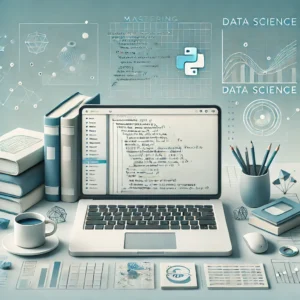Mastering Python for Data Science is an essential step for anyone looking to excel in data-related fields. Python, renowned for its versatility and simplicity, is the go-to programming language for data scientists, offering powerful libraries like Pandas and NumPy for data manipulation and analysis.
With visualization tools such as Matplotlib, Seaborn, and Plotly, Python makes creating intuitive and publication-ready charts seamless. A strong grasp of Python allows users to preprocess, clean, and handle large datasets efficiently, while its integration capabilities, like working with SQL and databases, simplify data workflows.
Python also bridges the gap between statistics and data visualization, enabling tasks like time-series analysis, exploratory data analysis (EDA), and automation of repetitive tasks in data processing. By leveraging tools like Jupyter Notebooks, learners gain an interactive and user-friendly environment for data science tasks.
Its extensive community support and resources ensure continuous learning and adaptation to new challenges. Mastering Python equips professionals to analyze trends, forecast outcomes, and make data-driven decisions in fields like finance, marketing, and healthcare.

- Additionally, libraries like Dask and Polars empower data scientists to scale their analysis to massive datasets, while Python’s versatility allows deployment across cloud, desktop, and server environments. Beyond its applications in data science, mastering Python lays the foundation for exploring advanced areas such as machine learning and artificial intelligence. Ultimately, Python is not just a tool but a gateway to becoming a data-driven decision-maker in today’s world.